How to find comps for commercial real estate
No matter your market or preferred asset type, finding comps for commercial real estate isn't the weighty task it used to be.

The simple question: What’s the quickest way for your team to compile data and analyze comparable properties to assess and size potential market opportunities?
We’re going to show you that, with Reonomy, real estate comps can become a consistent, reliable, and simple part of your team’s workflow.
How to find real estate comps
Commercial real estate comps are primarily used for one of two reasons:
To assess the value of a single property.
Or to find duplicates of a favorable investment/business opportunity.
Appraisers, property buyers, and property sellers are among those who might turn to real estate comparables on a regular basis.
Appraisers: The use of comps for appraisers is pretty straightforward. They need to determine the value of a property, and one of the largest determinants of that is the value of very similar surrounding properties.
Property Buyers: A commercial buyer would look at comparables to make sure that they’re paying a favorable, or at least fair, price for land or property.
Property Sellers: On the contrary, of course, a property seller would use comparables to make sure that they’re receiving a fair and favorable price for their parcel.
Okay, so comps are important. But how do you find them? With Reonomy, the market’s leading provider of property intelligence, finding comps and their respective owners just takes a few quick clicks. Keep reading to learn more.
Reonomy property intelligence
While sales history is a large part of generating comparable properties, Reonomy harnesses property intelligence to generate comparables based on overall property value. Value is assessed based on a combination of many factors, not just sale price.
How Reonomy comps are determined
Reonomy real estate comps are generated based on factors such as market conditions, geographic characteristics, and physical characteristics. Market conditions typically revolve around the sales trends of the market in which an asset exists. Geographic characteristics revolve around whether a comparable property is under the same locational influences of the subject property. Physical characteristics are the building-level specs of a property, such as building size, age, and so on.
The properties that fall within a close geographic distance to that of your subject property and have comparable market, geographic and physical characteristics will be the ones that appear in your Reonomy list of comparables. So, then, how do you actually go about doing this?
How to find comps with Reonomy
To find real estate comparables with Reonomy, you have to start with a property search. You’ll often start by searching for an asset by address—though you can also start a search from scratch using a variety of other characteristics. In any case, once you know that you’re interested in it as a business or acquisition opportunity, you can begin your search for comparable assets. On any individual property profile, see the “View Comparables” button next to the print logo near the top of the page.
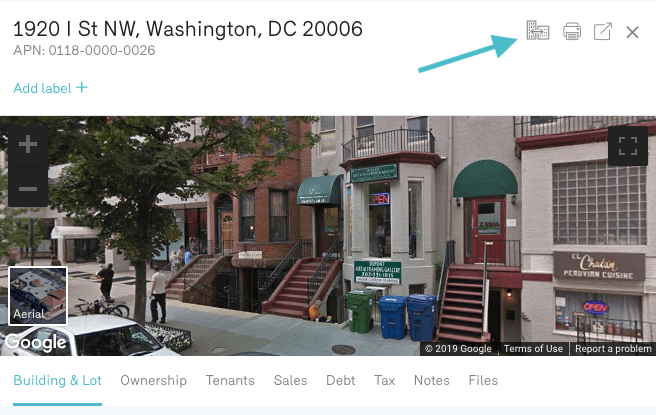
Click that icon and Reonomy will present you with a list of comparable properties:
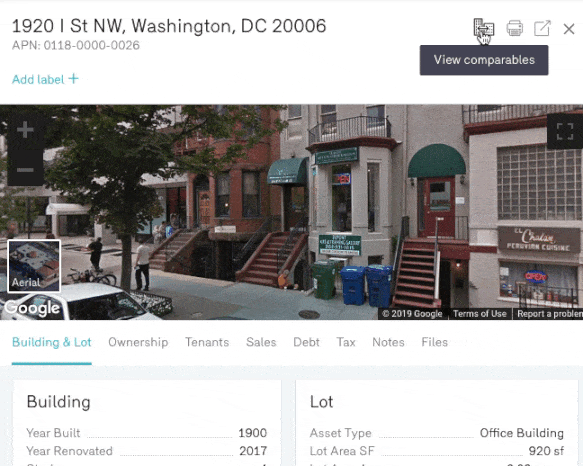
You’ll be presented with a list of properties that Reonomy deems to be comparable to your subject property. From there, you can begin to dive into individual profile pages for comp properties to compare different assets more explicitly. A useful workflow tool to use here is Reonomy’s table view of properties.
After you’ve generated a list of comps, click the “Table” button at the top of the page to switch your view to a table and see more properties at once.
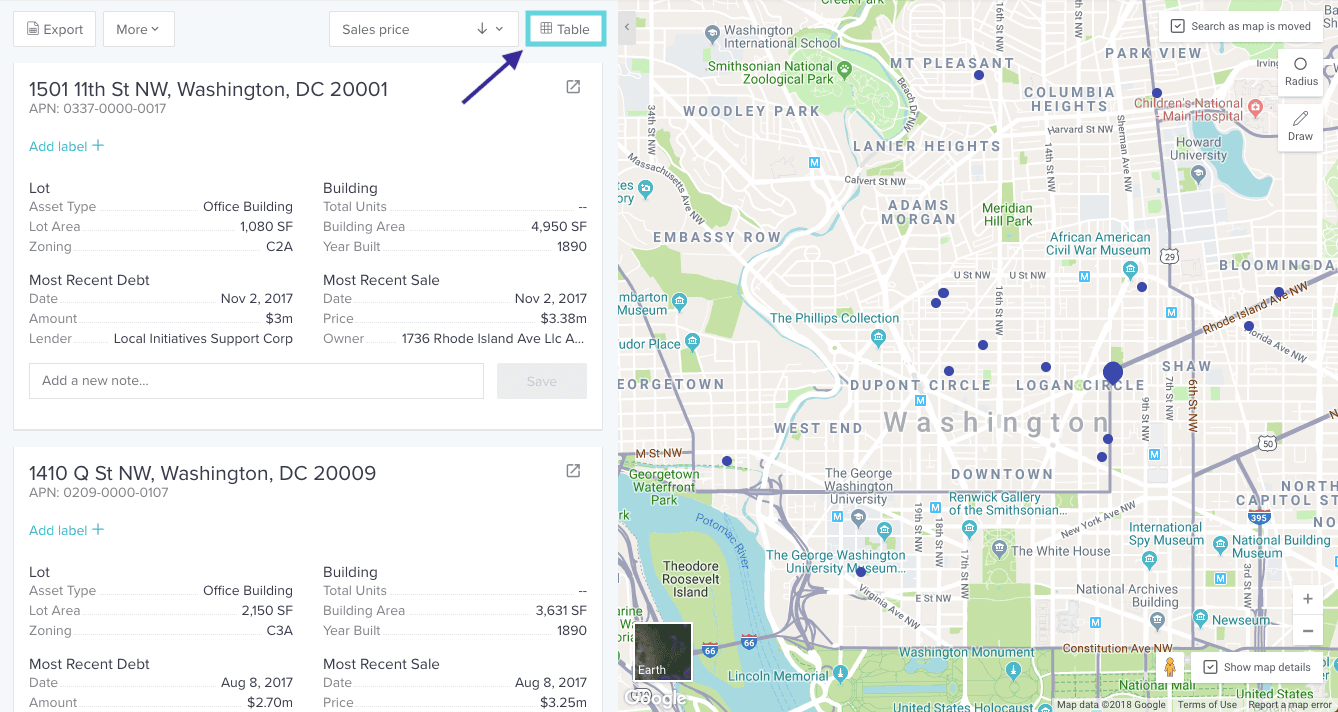
The table view allows you to see a list of properties without the active map view, so that you can see the same pieces of information for many different properties, all at the same time.
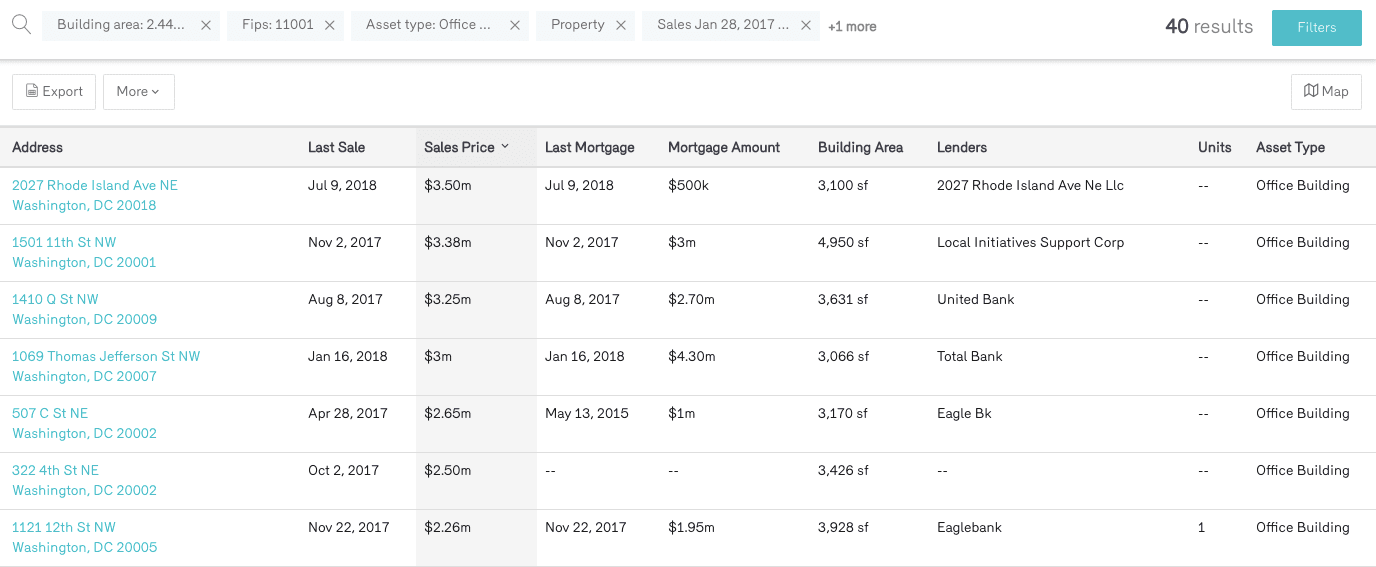
While viewing your comparable properties as a table, you can click the address of any property in the list, to jump to its property profile page. You may also sort each column high-to-low, or vice versa, to see your property list in a specific order—like sales price, date of last, mortgage amount, building area, lender, and asset type.
How to find comps near you
Finding real estate comps in your area is as simple as running a property search based on location. For example, if you’re in Miami, Florida, looking for nearby comps…
You can simply run a search for Miami properties of a certain asset type and financial history, then, as we demonstrate above, click “View Comparables” on any asset. Reonomy comps are very heavily driven by location, so most of your results will be within a short radius of your subject property, no matter where you’re looking. And even if they aren’t, you can re-add or remove filters even after you’ve clicked to view comps. Once you click “View Comparables,” you can still broaden or narrow down your filtered list of properties.
How to Broaden Your Comp Search
At any point in your comp search, you can click into the search bar at the top of the page, then add or take away filters. Your ability to customize does not change at any point in any property search. If you feel that your list of comparables is too broad or too narrow, you can simply take away or add the necessary filters to change your results to varying degrees. If you think your search is too narrow, for example, simply remove some of the filters that were added when you ran your search for comps.
This will, in turn, generate more broad results.
Perhaps you’ve run a comp search and found that the focus area is instead too broad. To narrow your search down to a more refined geographic location, you can use the map area tools such as the draw and radius tools to tighten the range of your comp search.
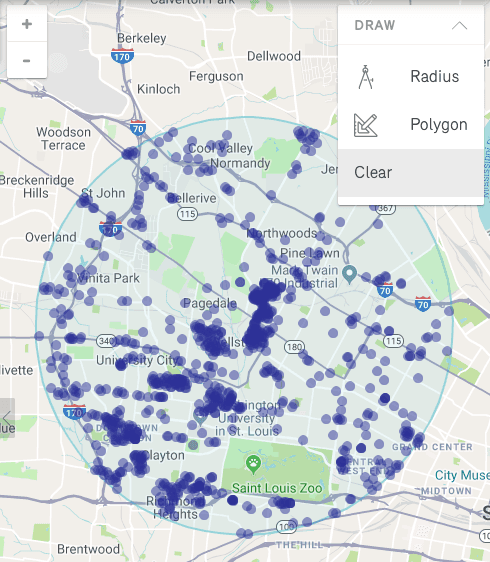
You can also add more filters – perhaps more building and lot or sales filters, on top of what is already there, to make your comp search even more granular. Real estate comps are there to lay the groundwork for you to continue your search and dive much further into markets, without losing any of the flexibility available on Reonomy’s search platform.
Find comps by owner name or entity
In some cases, you may want to find comparables to that of an owner you’re familiar with—an owner that has a portfolio similar to yours, or one that has a lot of similar properties. To search for comparables by owner name, utilize the Ownership tab of the search page.
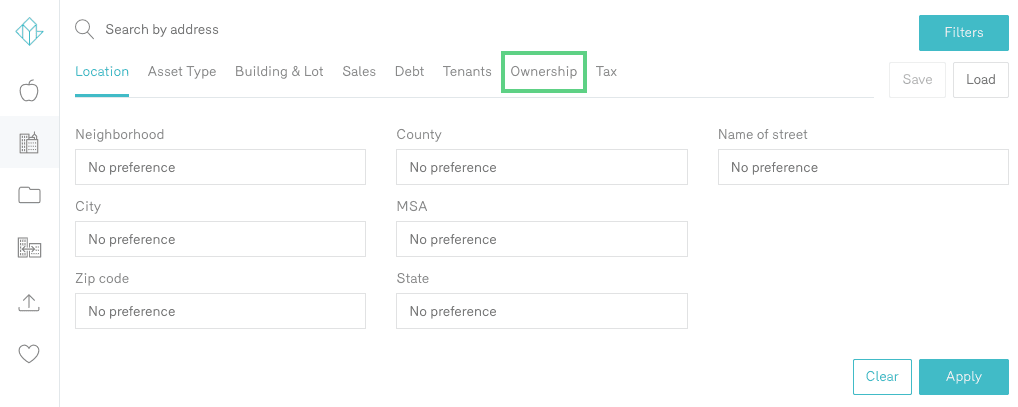
Here, you can search for an owner by name or LLC, to then dive into their properties and run comps in the same way we showed above.
Find owner contact information of comparable properties
Now, let’s say you’ve found a comparable property, and would like to contact the owner of that property either as a buyer, seller, or someone looking to offer a service. Reonomy’s robust property intelligence allows you to you to see the contact information of the individuals tied to a property’s ownership—and that includes the ability to pierce an LLC and see the people behind it.
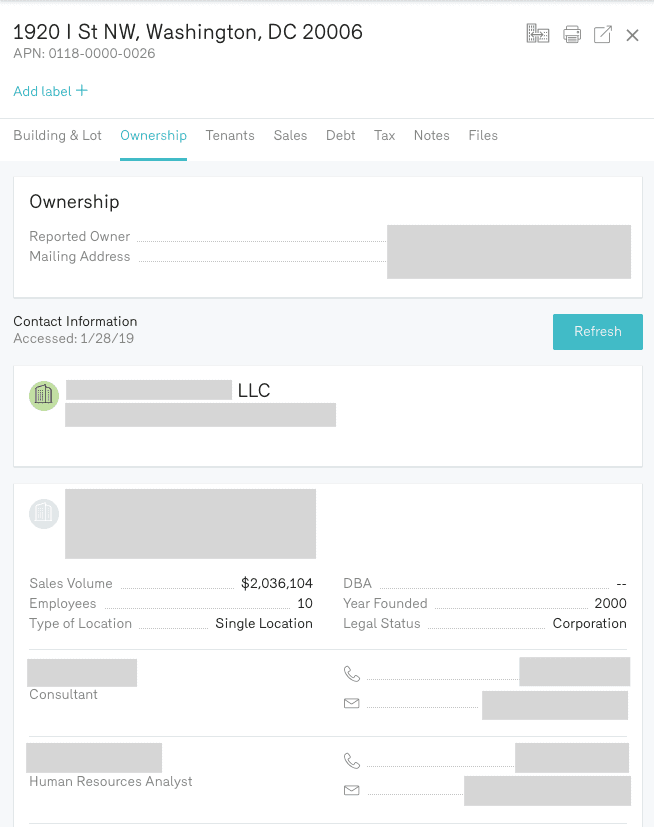
Here, you can see the phone numbers, emails, and mailing addresses of all of the individuals tied to property ownership, as well as those that are likely the decision-makers.
Maximizing your expertise with comps to win new business
You can use Reonomy’s real estate comps to search comparables on properties that you are already familiar with. For example, let’s say you are an investor targeting multi-family homes in Austin, TX, and already have five properties that you know are perfect targets for your portfolio. One way to capitalize on real estate comps is to start your comp search with one of those five properties. This is a quick and easy way to use your existing knowledge of specific properties to uncover more potential opportunities.
Reonomy versus the alternatives
There are surely other options when it comes to finding commercial real estate comps. The issue, however, is that it can be extremely tedious, all the while returning results that might not even be of great use. Given the fact that sales records are the basis of all comps, anywhere that you can access sales records, you can essentially glean your own comps. Unlike Reonomy, however, you’ll have to do a bit of your own digging.
Public sales records
With the help of your local county clerk, recorder, or assessor (the language and source can vary from county to county), you can either search for properties that have been recently sold, or you can search for a property you’re already aware of that sold to look up the price that the previous owner fetched. While this method can be useful, it is useful in much smaller quantities, and will likely only generate a comp or two—unless you spend exorbitant amounts of time searching.
Hiring an agent
One way to find real estate comps but save time is to hire an agent to do the searching for you. In this scenario, you can let them decide how the comparables are found (they may even use Reonomy to do so), and spend your time on different tasks.
Wherever you might be in the US, and regardless of whether you’re an appraiser, buyer, or seller, Reonomy’s property intelligence and comp-generating capabilities offer the quickest path from start to the finish line, while offering near-complete customization along the way.
Author

Reonomy
Resources team
Author

Reonomy
Resources team




